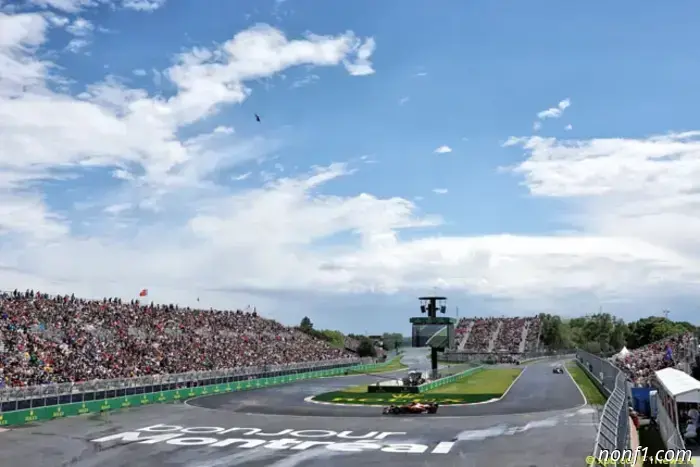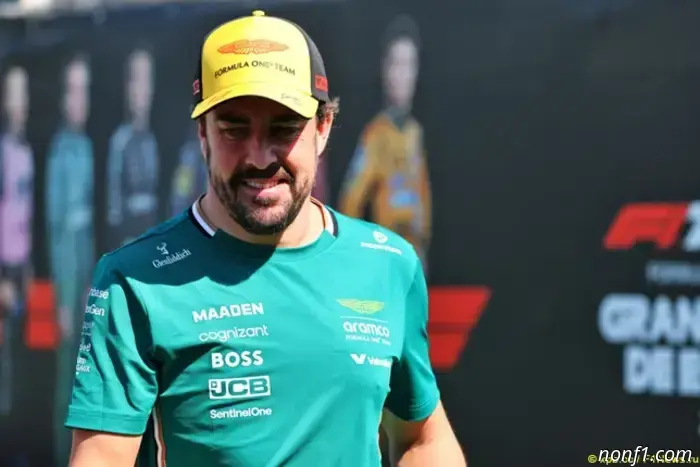
Pirelli predicts a lot of overtaking and weather surprises
The tenth stage of the season will be held in Montreal at the Gilles Villeneuve Circuit. The Canadian Grand Prix is considered one of the highlights of the championship calendar, and it is loved by drivers, teams, and fans alike.
For this race, Pirelli tire manufacturers have prepared tires of the three softest compounds – the same choice was made for Imola and Monaco. That is, the composition of C6 is Soft, C5 is Medium, and C4 will be used as Hard. It is worth noting that a year ago the lineups were one step more rigid, i.e. then the teams worked with C3, C4 and C5.
The C6 line–up is new, it was only used this year, but now the teams and riders already have experience working with it, and at the stages in Imola and Monaco they gathered enough information about its behavior on the track.
The nature of the Montreal ring is such that the tires are less affected by transverse loads – they usually range from medium to low – but more pronounced longitudinal loads associated with a constant series of acceleration and sudden braking.
The asphalt surface is very smooth, not too abrasive, and it was completely renovated last year. But the peculiarity of the track is that, except for the Canadian Grand Prix, which takes place once a year, the rest of the race is not held there. Therefore, Pirelli anticipates that there will be granulation in Friday's training sessions, especially in the first session.
However, its intensity should decrease as the asphalt becomes covered with a layer of used rubber. Accordingly, the speeds will increase rapidly, and the results on the lap will get better, including during each session.
But the most important thing is the weather factor, and although, according to the forecast of the Canadian Weather Service, precipitation is not expected during the weekend, the local weather is unpredictable, and this must also be taken into account. Everyone remembers that a year ago, the Canadian Grand Prix started on a wet track, and 18 riders started on intermediate tires, and the Haas cars had tires for heavy rain.
At that time, this decision seemed right, because Kevin Magnussen, who started from 14th, had made his way to 4th position by the third lap. However, the asphalt surface dried up quickly, and the Haas drivers had to go to the pit stops first for intermediate tires. And the Montreal Grand Prix ended with more or less sunny weather, and all the cars were already on slicks.
In case of rain, the teams have both intermediate tires and Pirelli Cinturato Full Wet tires, i.e. tires for more intense precipitation. In 2025, they were improved, becoming more efficient, durable, and less susceptible to overheating and temperature degradation.
If it's not easy to predict the local weather, then it's safe to say that there will be a lot of overtaking in Canada, including thanks to the three DRS zones. But they are most likely to occur during late braking at the end of the straight, which precedes the last chicane. However, accidents also occur most often in this part of the route.
Other articles
 The first training sessions take place at Le Mans
The tests leading up to the 24 Hours of Le Mans started today in France at the Sarthe circuit, and Robert Kubica, AF Corse racer, showed the best time in the first session...
The first training sessions take place at Le Mans
The tests leading up to the 24 Hours of Le Mans started today in France at the Sarthe circuit, and Robert Kubica, AF Corse racer, showed the best time in the first session...
 Canadian Grand Prix: Preliminary weather forecast
The preliminary forecast for the Canadian Grand Prix promises cloudy but dry weather during the race weekend.
Canadian Grand Prix: Preliminary weather forecast
The preliminary forecast for the Canadian Grand Prix promises cloudy but dry weather during the race weekend.
 Formula 1 heroes applaud tennis heroes
The French Open Tennis Championship is certainly a vibrant event and arouses great interest all over the world, including representatives of Formula 1 on the stands of the court...
Formula 1 heroes applaud tennis heroes
The French Open Tennis Championship is certainly a vibrant event and arouses great interest all over the world, including representatives of Formula 1 on the stands of the court...
 Alex Palow: Now is not the right time to switch to F1
Alex Palow, three-time IndyCar series champion and winner of the 2025 Indianapolis 500 Miles race, said he had no plans to switch to Formula 1, even if he received such an offer.
Alex Palow: Now is not the right time to switch to F1
Alex Palow, three-time IndyCar series champion and winner of the 2025 Indianapolis 500 Miles race, said he had no plans to switch to Formula 1, even if he received such an offer.
 Alonso: I have to be 100% sure of my decision.
Fernando Alonso's contract with Aston Martin expires at the end of 2026. The Spanish racer said that he had not yet decided whether he would extend it or end his career there.
Alonso: I have to be 100% sure of my decision.
Fernando Alonso's contract with Aston Martin expires at the end of 2026. The Spanish racer said that he had not yet decided whether he would extend it or end his career there.
 The Canadian Grand Prix: The stage of the prediction competition
The reception of forecasts for the results of the Canadian Grand Prix in our Competition continues.
The Canadian Grand Prix: The stage of the prediction competition
The reception of forecasts for the results of the Canadian Grand Prix in our Competition continues.
Pirelli predicts a lot of overtaking and weather surprises
For the Canadian Grand Prix, Pirelli tire manufacturers have prepared tires of the three softest compounds – the same choice was made for Imola and Monaco. It is worth noting that a year ago the compositions were one step more rigid...
